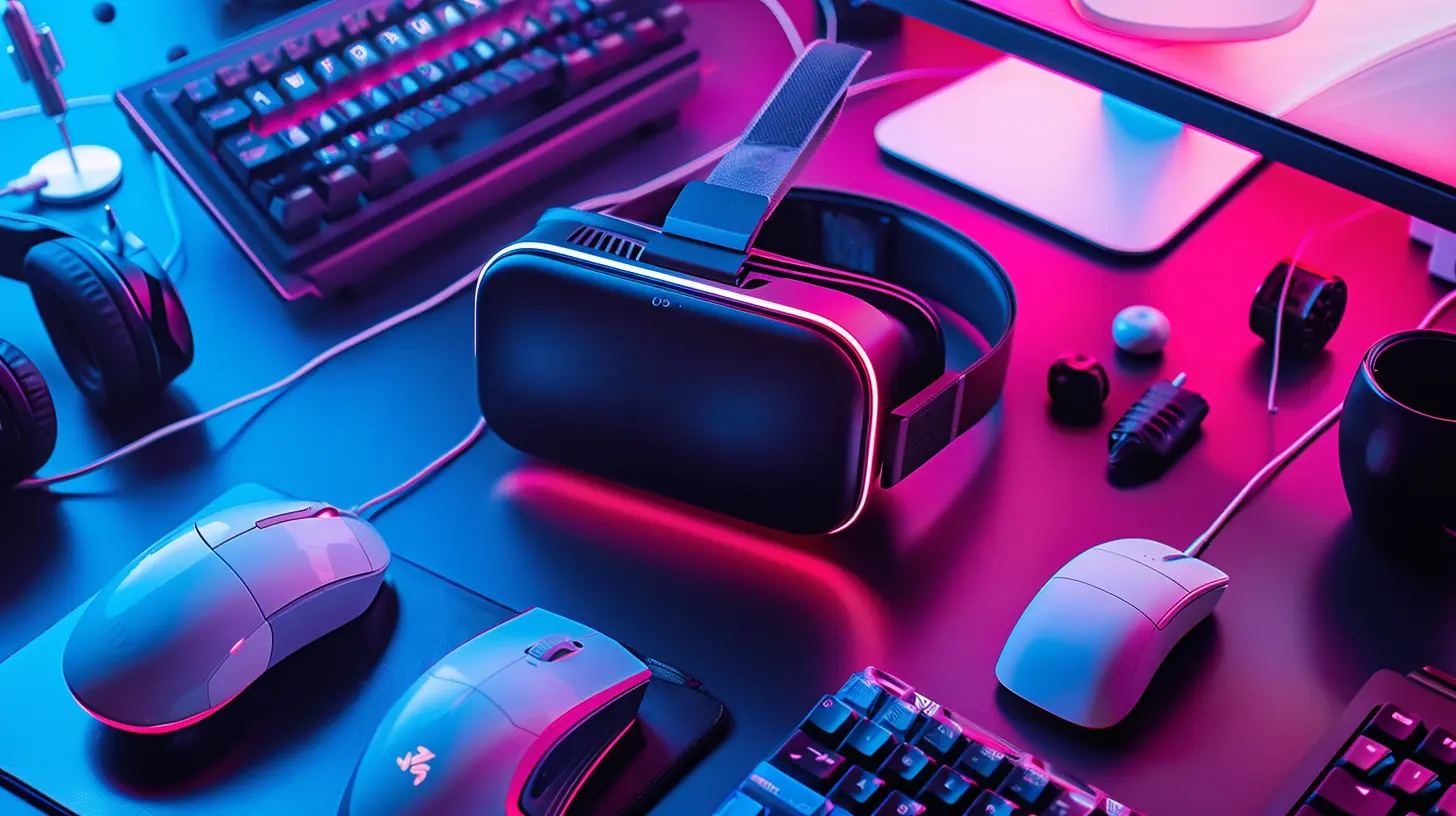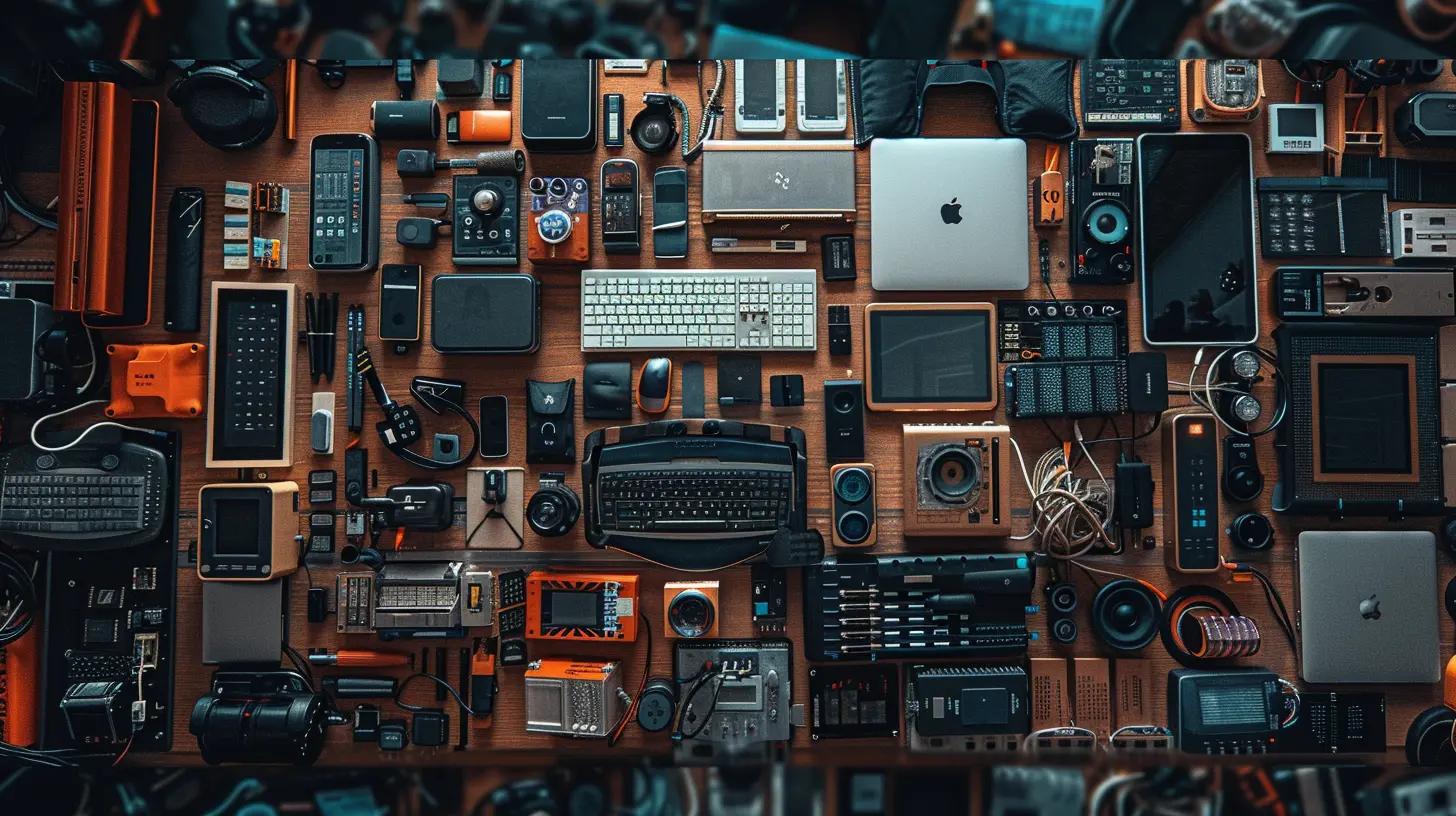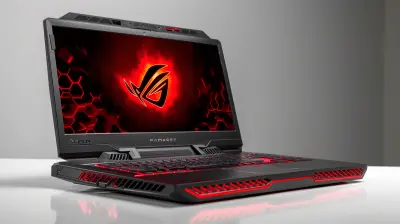The Future of Peripherals: How AI is Changing Computer Accessories
1 August 2025
Let’s face it—peripherals used to be the sidekicks of your computer setup. You know, steady but boring: the keyboard, mouse, webcam, headphones… all doing their job without making much noise (figuratively and literally). But guess what? That’s all changing. Big time. Artificial Intelligence (AI) has stepped in, and now peripherals are getting smarter, more intuitive, and honestly... way cooler.
In this post, we’re diving deep into how AI is flipping the script on traditional computer accessories. We’ll unpack what’s happening right now, what’s just around the corner, and why your next mouse or headset might be smarter than your old laptop.
Wait, What Even Are Peripherals?
Quick refresher—peripherals are the external devices you plug into your computer to interact with it or expand its abilities. Think keyboards, mice, printers, webcams, headphones, microphones, external drives… you get the drift.Traditionally, they’ve been pretty static. But AI is infusing them with real-time learning, predictive behavior, and personalized experiences. It’s like giving your gadgets a brain.
AI + Peripherals = Smarter Everything
Let’s break this down. How exactly is AI changing the game for peripherals? Here's a look at some of the major ways:1. AI-Powered Keyboards: Typing with Intelligence
Keyboards are no longer just a slab of plastic with letters on it. With AI, keyboards can now:- Predict what you’re typing based on your writing patterns.
- Auto-correct in real-time, beyond simple spell check—think grammar context, tone suggestions, and even formatting.
- Dynamic shortcuts and macros based on the apps you're using or your workflow habits. Some high-end productivity keyboards now adapt based on your typical app usage!
Ever used Grammarly? Now imagine that built into your actual keyboard hardware. Yep, that’s happening.
2. Smart Mice That Know You Better Than You Know Yourself
A regular mouse points and clicks, right? A smart mouse goes further:- Gesture recognition: Flick your wrist, and boom—you’ve switched desktops.
- Customized sensitivity and buttons, adjusting based on whether you’re browsing, gaming, or editing.
- AI-driven ergonomics: Some models are even learning how you move and adjusting their feedback or resistance to reduce wrist strain.
This isn’t just luxury—it’s usability, productivity, and even health wrapped together in your palm.
3. Headsets and Microphones That Actually Listen
Ever been in a Zoom call where background noise makes it sound like someone’s vacuuming an entire stadium? AI is coming to the rescue here.AI-enhanced headsets and mics can:
- Filter out background noise intelligently so you only hear the speaker.
- Adjust volume and tone in real-time based on your environment.
- Use voice recognition to prioritize or mute specific users, or even transcribe conversations on the fly.
And that’s not to mention how good these peripherals are getting at understanding your voice commands. Hello, hands-free control.
4. AI Webcams: Your Face, Upgraded
Webcams used to be an afterthought. Now they’re front and center (especially thanks to the remote work boom). AI is helping webcams do more than just show your face—it's helping them show your best face.- Auto-framing: The cam follows your face as you move.
- Real-time lighting and color correction so you don’t look like you're Zooming from a dungeon.
- Background blur or replacement using AI algorithms that don’t need a green screen.
- Facial expression analysis for training, interviews, or presentations.
The line between conference camera and cinematography tool is honestly starting to blur (pun intended).
5. Printers That Actually Think
Let’s be real—printers have always been the slowest member of the tech family. But now they're finally catching up.AI-enhanced printers can:
- Detect maintenance issues before they blow up.
- Optimize print quality automatically based on the paper or ink levels.
- Smart scheduling and multitasking, so it prioritizes urgent jobs first.
And guess what? Some even reorder ink or toner all by themselves.
6. External Storage That Organizes Itself
You plug in a hard drive and dump files. But AI can help you do a lot more:- Auto-sort files into folders based on types or project.
- Duplicate file detection and removal.
- Predictive file suggestions—so the doc you're probably looking for is already waiting for you.
Imagine a storage device that’s a mix between Google Search and Marie Kondo. That’s where we’re headed.
7. Cameras and Scanners with Eyes and Brains
Scanners used to just… scan. Now they understand what they’re scanning.- OCR (Optical Character Recognition) has gone from primitive to pin-sharp.
- Smart document formatting and categorization.
- Even handwriting recognition and auto-tagging.
Visual AI also helps peripherals like digital drawing pads recognize the pressure, speed, and style of your strokes, improving accuracy and user-friendliness.
Real-Life Use Cases: This Ain’t Sci-Fi
Let’s run through a few real-world examples of smart peripherals in action:- Logitech’s AI Smart Cameras
These webcams adjust lighting, track faces, and deliver near-broadcast quality video. Perfect for remote execs or content creators.- Microsoft Surface Adaptive Accessories
These devices learn how users with disabilities interact with them and adjust controls accordingly for better accessibility.- Razer’s HyperSense Haptics
Gaming peripherals that use AI to analyze gameplay audio and generate real-time vibration feedback. You don’t just hear the explosion—you feel it.- AI Noise-Canceling Mics (NVIDIA RTX Voice)
Using GPU-based AI to isolate voice and strip background noise—perfect for streamers, podcasters, or anyone in a noisy home office.
The Peripherals of Tomorrow: What’s Next?
This is just the start. So what’s coming next? Here’s a quick peek into the not-so-distant future.1. Brain-Computer Interfaces (BCIs)
Imagine typing or clicking just by thinking. Companies like Neuralink and CTRL-Labs are developing peripherals you control with your brain.2. Adaptive Learning Accessories
Peripherals that evolve how they work over time based on your habits, workflows, and even mood. Kind of like a digital assistant that lives in your keyboard and mouse.3. Biometric Feedback Tools
Keyboards and mice measuring stress, heart rate, or fatigue to help prevent burnout. Your peripherals might tell you when to take a break before your body does.4. Cross-Device Intelligence
Your mouse knows you're gaming on your PC but editing on your tablet—so it changes its functionality on the fly. AI learns, syncs, and responds across all your devices.Why This Actually Matters
You might think, “Okay, cool tech… but do I really need it?” Fair question.Here’s the thing: smarter peripherals make your tech experience smoother, faster, and more personalized. They bridge the gap between humans and machines by making interaction feel intuitive.
Whether you're a gamer, a writer, a creative, or just someone trying to survive the work-from-home life, AI-powered peripherals can save you time, reduce friction, and maybe even add a little joy to your workflow.
And with accessibility advances, it’s also helping people with physical or cognitive limitations use tech in ways that weren’t possible before.
Challenges Ahead
It's not all sunshine and smart buttons. As AI seeps into our peripherals, there are valid concerns:- Privacy: Your webcam learning your face? Your mic analyzing your voice? That’s sensitive data.
- Dependence: What happens when you rely on AI to anticipate your needs and it gets it wrong?
- Cost: Smart tech is usually not cheap, at least initially.
So while the future is exciting, it’s also important to keep a critical eye on how this technology develops.
Wrapping It Up
AI is no longer just something found in sci-fi movies or giant data centers—it's sneaking into the keyboard under your fingers and the mouse in your palm. That little webcam on your monitor? It's probably smarter than your first smartphone.The future of peripherals is all about making our interaction with machines more natural, responsive, and yes—human. They're learning from us, adjusting to us, and in many cases, thinking for us.
So next time you plug in a “simple” accessory, ask yourself: how smart is it? And more importantly—how smart could it be?
all images in this post were generated using AI tools
Category:
Computer PeripheralsAuthor:

Adeline Taylor
Discussion
rate this article
1 comments
Sabrina Mitchell
Oh, great! Just what we needed—AI-infused mousepads and smart keyboards to really elevate our gaming experience. Can't wait for my coffee mug to start giving me tech advice. Who knew the future of peripherals would be this... groundbreaking? Sign me up!
August 14, 2025 at 10:27 AM

Adeline Taylor
Thanks for your humorous take! The future of peripherals is definitely an exciting blend of practicality and innovation. Stay tuned!


